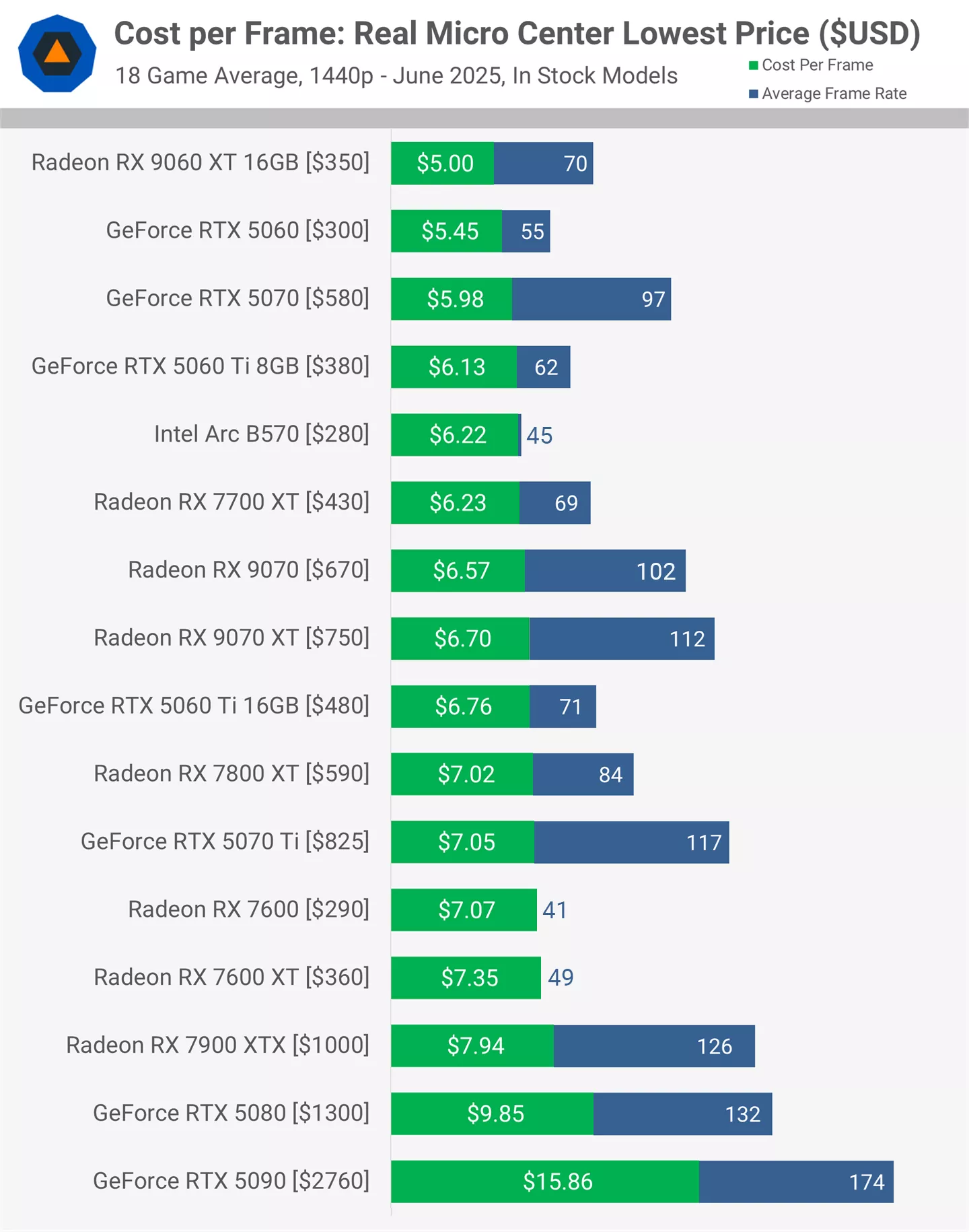The big picture: Despite earning one of our least favorable reviews out of one of Nvidia’s worst-ever GPU lineups, the RTX 5070 is likely the most popular graphics card released in 2025. Unsurprisingly, Nvidia maintains a dominant market share lead while Intel struggles to hold onto a sliver.
The latest sales report from TechEpiphany reveals that Nvidia sold 70 percent of graphics cards purchased from Amazon in the US in June 2025, with the RTX 5070 ranked first. The company’s RTX 50 Blackwell series cards seem to have garnered strong commercial enthusiasm despite harsh criticism.
Of the 31,200 GPUs Nvidia sold last month, 5,450 were RTX 5070s. The 5060 Ti and 5070 Ti were close behind, selling 4,950 and 4,400 units, respectively. The report doesn’t differentiate between the 8GB and 16GB variants of the 5060 Ti, but recent information suggests that new 8GB GPUs have performed poorly. Ranked fourth is AMD’s Radeon RX 9070 XT, the only model from Team Red’s new RDNA 4 lineup to crack 1,000 units.
🔥 GPU Retail Sales June ’25 Amazon US 🇺🇸
Polaris outselling ARC…
ℹ️ Market Share (by Units Sold):
Nvidia: 70.51% (31,200 units)
AMD: 27.57% (12,200 units)
Intel: 1.92% (850 units)ℹ️ Revenue Share:
Nvidia: 78.61% ($18,720,000)
AMD: 20.49% ($4,880,000)
Intel: 0.89%… pic.twitter.com/ju6CGkMnRi– TechEpiphany (@TechEpiphanyYT) July 4, 2025
The arrangement of Blackwell cards nearly mirrors June 2025’s Steam Hardware survey, in which the RTX 5070 is the most popular product from that generation. Meanwhile, RDNA 4 hasn’t yet emerged on the survey despite launching around the same time as the 5070 and earning an overall better critical reception.
Our benchmarks showed that the RTX 5070 barely surpasses its predecessor, the 4070 Super, and its paltry 12GB of VRAM makes heavy ray tracing workloads nearly impossible. Meanwhile, AMD’s RX 9070 and 9070 XT easily outperform it at a similar MSRP, even in ray tracing. However, MSRPs these days rarely represent reality.

One possible explanation for the RTX 5070’s strong sales is that, despite its disappointing performance, it ranks fairly high in most cost-per-frame comparisons. Recent reports indicate that consumers largely aren’t buying cheaper mainstream and entry-level GPUs that are burdened with 8GB of VRAM, barely sufficient for modern high-end games.
The RTX 5070 and 5060 Ti are the cheapest Nvidia cards offering more than 8GB, even after accounting for price inflation. Furthermore, the 5070 easily tops cheaper competitors, and almost every GPU that outperforms it is at least 12 percent more expensive. In a world of illusory MSRPs, customers seeking upgrades might simply be settling for the least bad deal.
Team Green also maintained dominance in revenue, earning $18.72 million in GPU sales and dwarfing AMD’s $4.88 million. Meanwhile, Intel’s presence remains minimal, with a revenue share of less than one percent and a 1.92 percent market share, selling under 1,000 units total. Despite being a 12 GB GPU that costs less than $300 and sometimes outperforms the 8 GB RTX 5060 Ti, Intel’s Arc B580 still sold fewer unit than ancient products like Nvidia’s GT 730 and AMD’s RX 580.